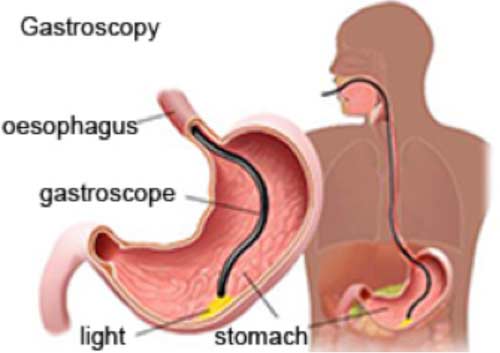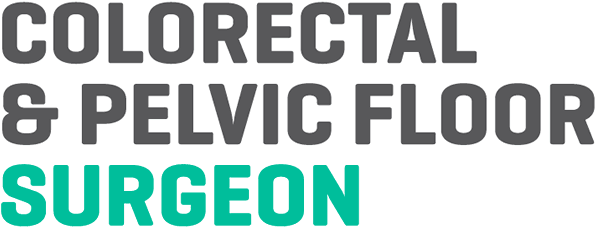Upper GI Endoscopy
Upper gastrointestinal (GI) endoscopy (also known as gastroscopy) is a procedure used to examine the lining of the oesophagus (gullet), stomach, and first and second parts of the duodenum at the start of the upper (small) bowel.
It is performed using a gastroscope (a long, thin flexible tube, with a tiny video camera attached to the end). The gastroscope is passed slowly through the mouth down to the duodenum, while images of the lining of the upper GI tract taken by the camera are displayed on a television screen. These images are taken as the gastroscope is being inserted and again as it is being withdrawn.

Using the gastroscope, the doctor can look for such abnormalities as ulcers, inflammation, growths, infection, or bleeding. If an abnormal area is seen, an instrument can be passed through the gastroscope to take a small sample of tissue (biopsy) for examination in the laboratory.
For upper GI endoscopy to be successful, the stomach must be completely empty. The procedure requires fasting for six hours and no fluids for four hours before the procedure.
Upper GI endoscopy can be uncomfortable but is rarely painful, so general anaesthesia is usually not necessary. You may be given a liquid anaesthetic to gargle or an anaesthetic spray on the back of your throat. This both numbs your throat and helps you swallow the tube without gagging. The procedure can be performed with intravenous sedation, but only a few people actually fall asleep with this medication. It merely makes the procedure more comfortable. Upper GI endoscopy may take up to 15 minutes to perform, but usually much less.
If you have been sedated during the procedure, you will need to rest for two hours before going home. Note that you must not drive for 24 hours if you have had sedation, so please arrange in advance for a relative or friend to take or accompany you home. If you have not had any sedation, you will be able to go home within half an hour and carry on with your usual activities. However, whether you have been sedated or not, we recommend that you stay for a drink and something to eat before you leave the hospital.
At the end of the procedure, the results will be discussed with you and any samples taken will be sent to the laboratory. A report will be available shortly afterwards and a copy will be given to you and sent to your general practitioner.
Perforation is a rare but serious complication where a hole is made in the oesophagus, stomach or duodenum during the procedure. This occurs in less than one in 1000 cases. Every care is taken to avoid this complication.

